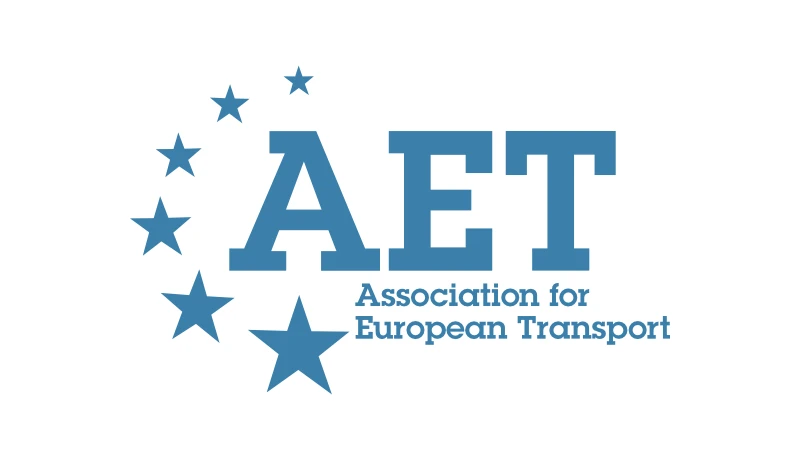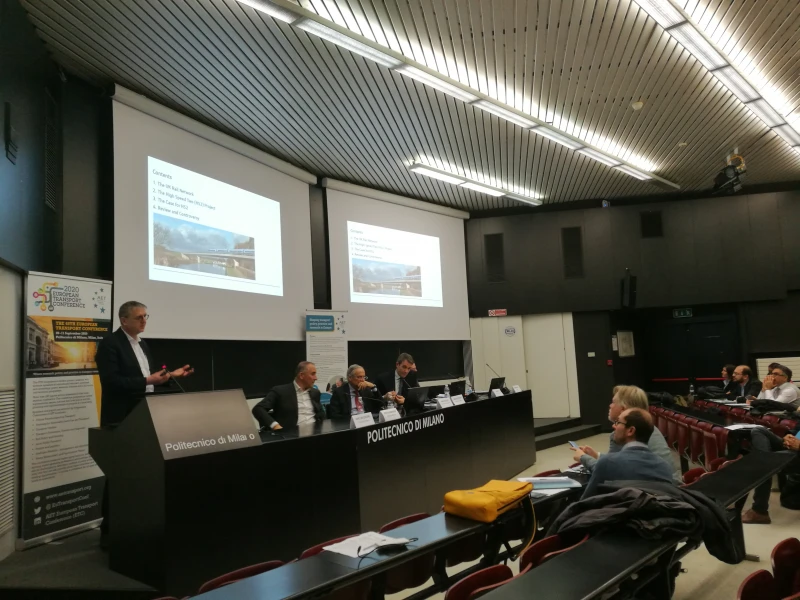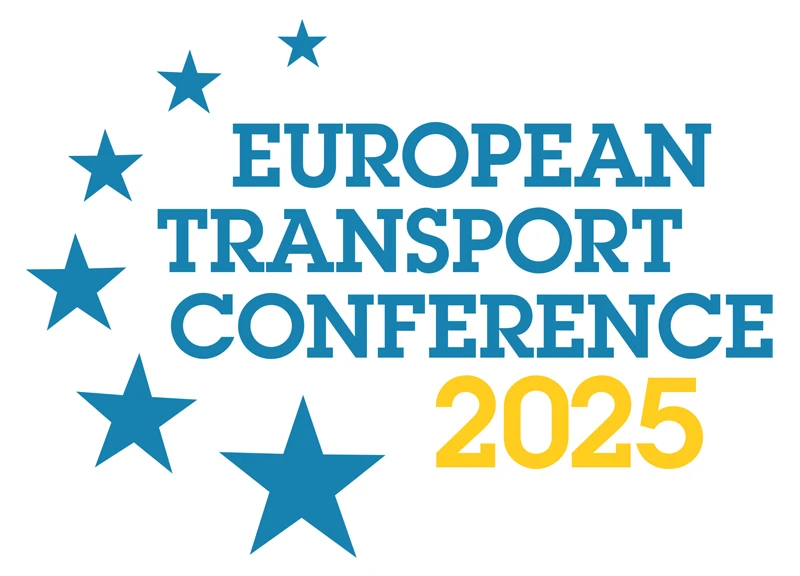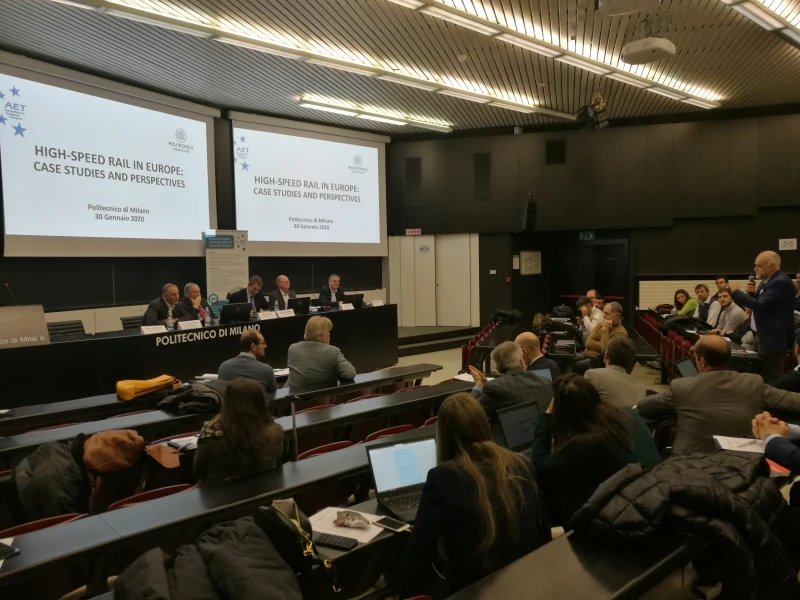-
Past ETC Papers
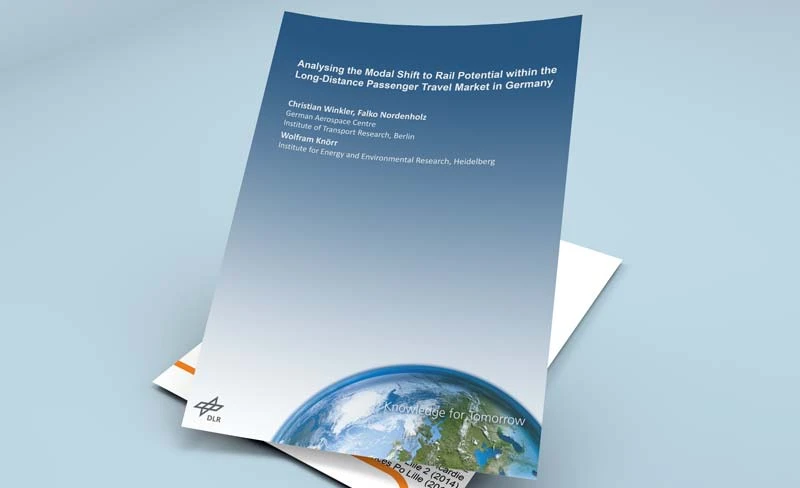
Browse, search and view papers from the past AET Conferences.
-
Members' Area
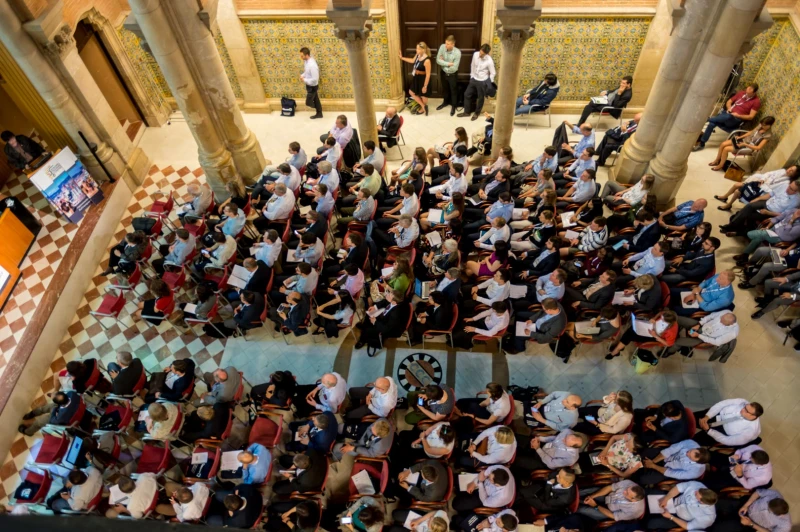
AET promotes networking and exchange of ideas, information and opportunities amongst members.
Conference Papers 2005
Strasbourg, France
ETC Conference Papers 2005
A mesoscopic approach to capacity and delays evaluation in un-signalised roundabouts
Seminar
Day 2 (4 Oct 2005), Traffic Engineering and Street Management, Practical Applications of Microsimulation, 19:00 - 22:00
Status
Accepted, awaiting documents
Authors
R Camus, M Dall?Acqua, G Longo, DIC, University of Trieste, IT
Short abstract
The paper details a mesoscopic approach to estimate roundabout?s performances. It describes the final formulation of the model and shows the existence of an equilibrium solution to the problem of vehicles interactions into a roundabout.
Abstract
The paper deals with traffic management, mainly related to the study of un-signalised intersections. In particular it refers to the estimation of roundabout?s performances.
Many approaches have faced the problem of entry capacity and delays estimation; but there is not a common and universally accepted procedure to the evaluation of roundabout?s performances. Many models refer to an empirical approach, many others refer to a more theoretical one, but in this case a lot of hypotheses are needed. Furthermore, all these approaches consider the roundabout facility as a succession of independent intersections, whilst, mainly in congested facilities, it should be considered as a multi-junction node.
In this paper, a new approach has been presented, refined and applied to represent the input legs and the circulatory area of a roundabout facility as a multi-junction node. The proposed approach estimates capacity and delays for each entry leg and for the node as a whole. The procedure is based on a model proposed for on-ramp junctions segments on freeway; this theory has been applied to every approach legs of a roundabout, and specific requirements due to the presence of a circulatory roadway have been met. In this context, the most important problem is the relationship between circulating and entry flows in each input leg. Entry flows depend on the circulating ones, which are the result of entered vehicles in the previous entry legs: this is a problem that needs an iterative process but a final equilibrium solution could be find out.
Solving this circular relationship between entering and circulating vehicles, it is possible to well estimate entry capacity and queues development for each time interval step; in such a way, it is possible to overcome the hypothesis of the roundabout as a succession of independent T-intersections.
Queues evolutions could be studied in a more detailed way than in a macroscopic approach. The proposed method could be classified as a mesoscopic approach, because it doesn?t need many parameters or hypotheses that are really necessary in a microscopic one.
Anyway, the results of the proposed model have been deeply compared to the results of existing macroscopic and microscopic models. The proposed method is in accordance with existing models throughout a correct calibration of all parameters; the calibration process to assign the final value to the parameters is strictly connected to the geometrical features of the facility.
With reference to some existing roundabout facilities, results on the application of this procedure are briefly discussed and compared to the results of existing models.
Documents:
No documents yet.
Association For
European Transport
Forester House
Doctors Lane
Henley-in-Arden
Warwickshire, UK
B95 5AW
+44 (0) 15 64 793552
VAT number: 710 1866 64
Conference Supporters & Endorsers




Legal Entity
The Association for European Transport is registered as an Association ('vereniging') with the Chamber of Commerce for Haaglanden in The Netherlands under company number 27170096.
Built on Zenario

